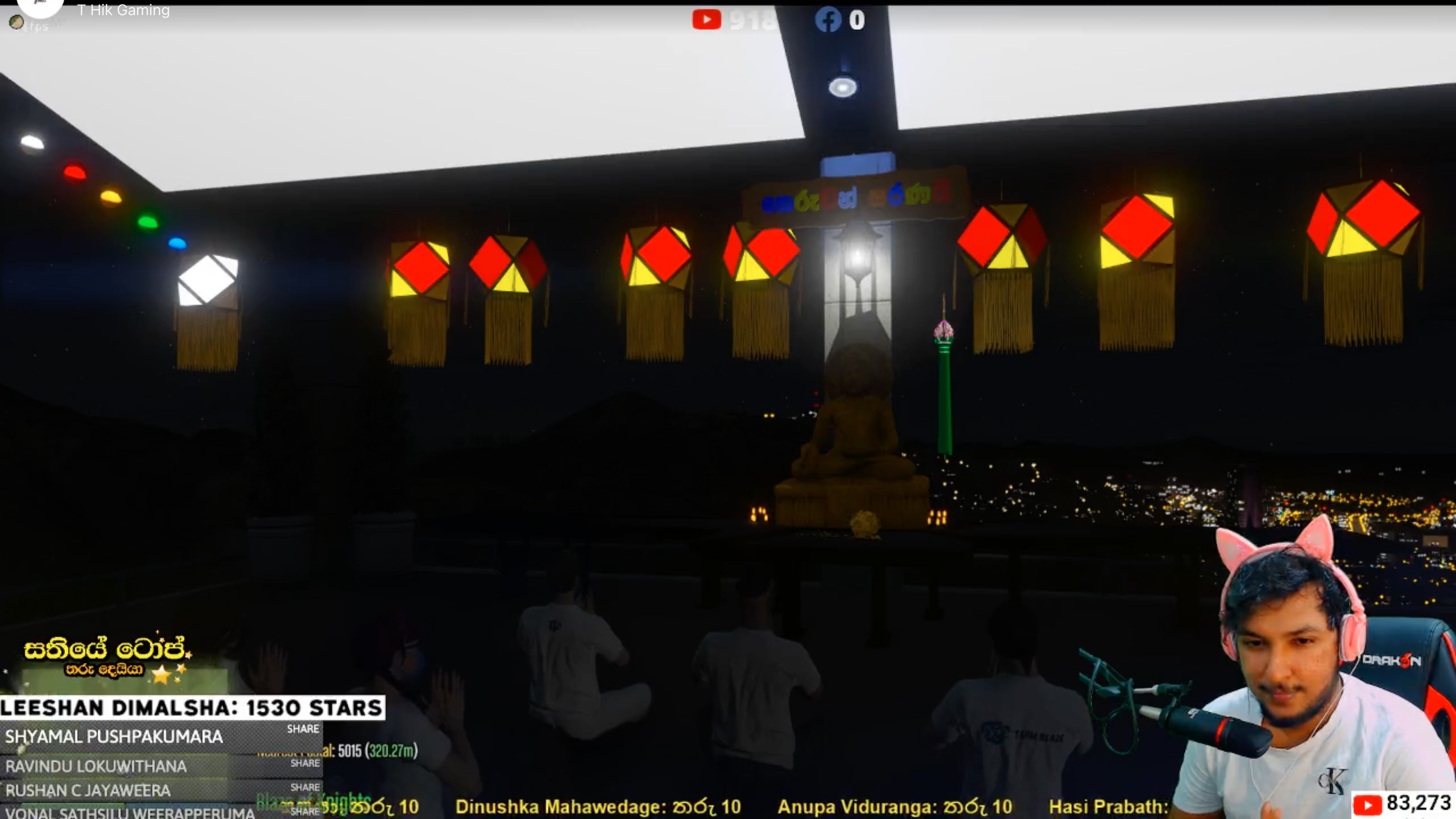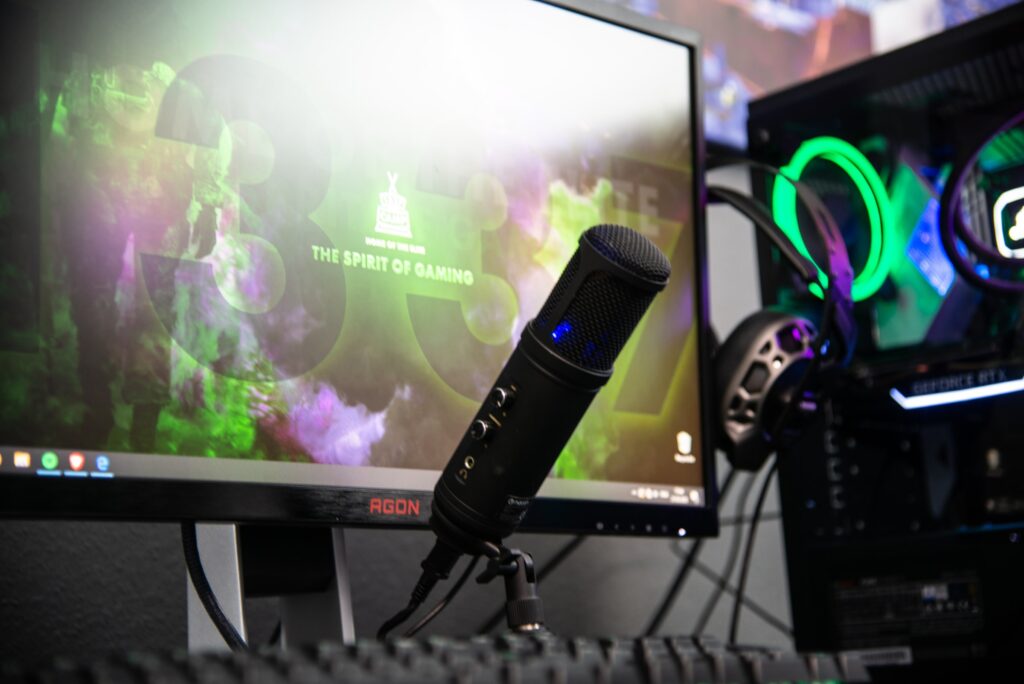
The average customer’s growing affinity to digital platforms is forcing the industry to reconsider older paradigms of entertainment consumption and revenue generation. Remember the days when entertainment alternatives available to the average Sri Lankan were restricted to the nearby single-screen movie theatre or the periodic music concert that was organized at a community center.
The brand-new millennium, which brought with it the guarantee of globalization, saw the introduction of trendy multiplexes and shopping malls that altered home entertainment for numerous Sri Lankans. With satellite TV and the internet, we were familiar with the world around us a little bit better than our previous generation.
Just last week, on poson poya day I witnessed something that I’ve never seen in Lanka. Local gaming icon “Hashano” streamed a live Poson experience with his fellow gamers within “Grand Theft Auto” which is an action-adventure game. There was a live music experience, Poson dansals, pandols, and even a Dhamma sermon within the gaming experience. The stream lasted around three and half hours and attracted around 27,000 views on YouTube and 85,000 views on Facebook. I’ve written about gaming and streaming in the past and what I saw that day on that stream made me wonder how would entertainment evolve in the next ten to 15 years. These are some bold predictions considering the direction some mature markets have already taken in the recent past and the few glimpses of shifts we currently witness in the media landscape.

There will still be cinema
Individuals will still go to theaters to see films, but just two times a year. These will be the big experiences: the smash hit “tentpole” movies with substantial suppressed need (Avengers, Star Wars, and so on). There will only be a 2-3 week “exclusive” period in theaters and after that, the films will hit the streaming services. Dramas, romantic comedies, indie movies-those will all go straight to streaming services.
TikTok and YouTube will become the two dominant video-sharing platforms
In 2030, there will be 2 giants in online video-sharing. YouTube will own long-form video, while TikTok will own short-form. Both will have vast networks of online creators (the term “influencer” will die out and be replaced by “creator”) whose full-time tasks are to create and monetize content. Currently, you see almost all Instagram models calling themselves influencers in Sri Lanka and many of these individuals attempting to influence almost all kinds of Industries. In the future, only the influencers who have developed credibility with their audience on a particular topic will survive the long run and get brand sponsorships and deals.
Instagram will contend more with Kapruka and Daraz than with TikTok or YouTube
Instagram will subtly add a growing number of shopping features up until it begins to be considered an e-commerce business, rather than a social network. Anyone will have the ability to quickly open their online shop on Instagram. Major local players who have walled gardens to keep its technology, information, and user data, with no intention of sharing it will see massive competition from Instagram.
The traditional TV bundle will devolve into live news and live sports
Eventually, the Television will only be for news and sports-live coverage. Any content that doesn’t translate well on TV will be aired on streaming services. We see this shift happening in exponential strides where people already prefer to consume content (The Latest Teledrama episode) when they want rather than on a specific broadcasted time. I believe this shift happened when the local teledrama Koombiyo was aired in Sri Lanka.
Voice and audio content will be big however will be eclipsed by video
Podcasting is flourishing: Currently, in the U.S., there are 700,000 free podcasts and 144 million listeners, with the typical listener taking in 6 hours of podcast content weekly. Podcasting will continue to grow (and more individuals will introduce their podcasts), however, the economics will largely flow to Spotify. Spotify will be the one-stop shop for audio material. With Spotify now entering the local market in 2021, we can see bits and pieces of that shift happening. There will likewise be regional alternatives in specific niches like mental health, fitness, and religious beliefs. Amazon, Google, and Apple will own audio distribution channels. Most importantly, the audio boom will be overshadowed by video: driverless cars, for example, will be a benefit for video material at the expenditure of audio. Cause now you can finally keep your eyes off the road and on the latest teledrama episode that’s playing in your vehicle entertainment system.
Music will shift power to the artist and record labels will suffer as a result
Artists get about 12% of the music industry’s profits-and the bulk of that is from live events. An artist requires about 400,000 streams on Spotify every month to make base pay. This will not last: technology is developing an essential shift of power to the creator. This decade, Spotify will use better terms straight to artists-eliminating the record label middlemen and websites like Patreon (and its newly-launched Patreon Capital) will allow artists to thrive with specific niche but enthusiastic fan bases. In 2030, the majority of music income will go to the artist.
The streaming wars will be over
The streaming wars will come cycle, with Netflix winding up mostly where it started: as the home for licensed material. Emerging rivals like Peacock and Quibi will flounder, eventually offering their content back to Netflix, which will produce its material in addition to being the industry’s aggregator. We would see local players bring out vernacular video content that would be consumed by the senior population that requires a shot of nostalgia.
AR / VR will be the next major customer platform after mobile

People state that traditional adoption of AR / VR is 3 years away; the problem is, people have been saying that for the past 5 years. By 2030, though, AR / VR will have reimagined home entertainment. Offline entertainment theme parks, for instance– will utilize innovation to create fantastic experiences. At Disneyworld, you’ll go into an enormous space. You’ll place on AR glasses, and voila, you’ll remain in deep space. With news coming out that Sri Lanka will be building South Asia’s first Disneyland in the proposed Bopitiya leisure Park, AR & VR could play a major role in its design elements.
Video gaming will be a full-blown social network
Video gaming is fast ending up being a social network: Teenagers spend over a billion hours a month in Fortnite. And those teenagers aren’t “playing” Fortnite-rather, they’re socializing with good friends in a virtual world. And the games will not be games that are “played” for an end-goal: they will be virtual worlds to hang out in. Video gaming will be the first industry to promote AR / VR. This pattern is currently on overdrive in Sri Lanka. Just take a look at the engagement that gaming streams by “Hashano and Evanji” are getting. Even new entrants such as “Shashi Nishadi” are hitting numbers that were never seen a year back.
Twitch and Caffeine will dominate live streaming which will have moved far beyond gaming

People will spend hours a day live streaming and seeing live streams of their favorite online creators. It will be a regular Friday night activity to join your preferred star’s Livestream and to simply hang out. New categories, beyond video gaming, will emerge performances, cooking, fashion. Livestreamers will monetize mostly through donations and subscriptions, rather than through ads. We saw glimpses of this occurring throughout the first and second waves of the pandemic in Sri Lanka, Where content developers and artists did host live concerts and streams to keep their audiences engaged and gather donations.
- Written by: Mohenesh Chamith Buthgumwa
- Posted on: June 30, 2021
- Tags: apple, Ar, caffeine, cinema, daraz, digital marketing sri lanka, evanji, google, grand theft auto, GTA, hashano, instagram, kapruka, Koombiyo, live news, live sport, netflix, peacock, poson, quibi, shashi nishadi, spotify, Twitch, vr, youtube